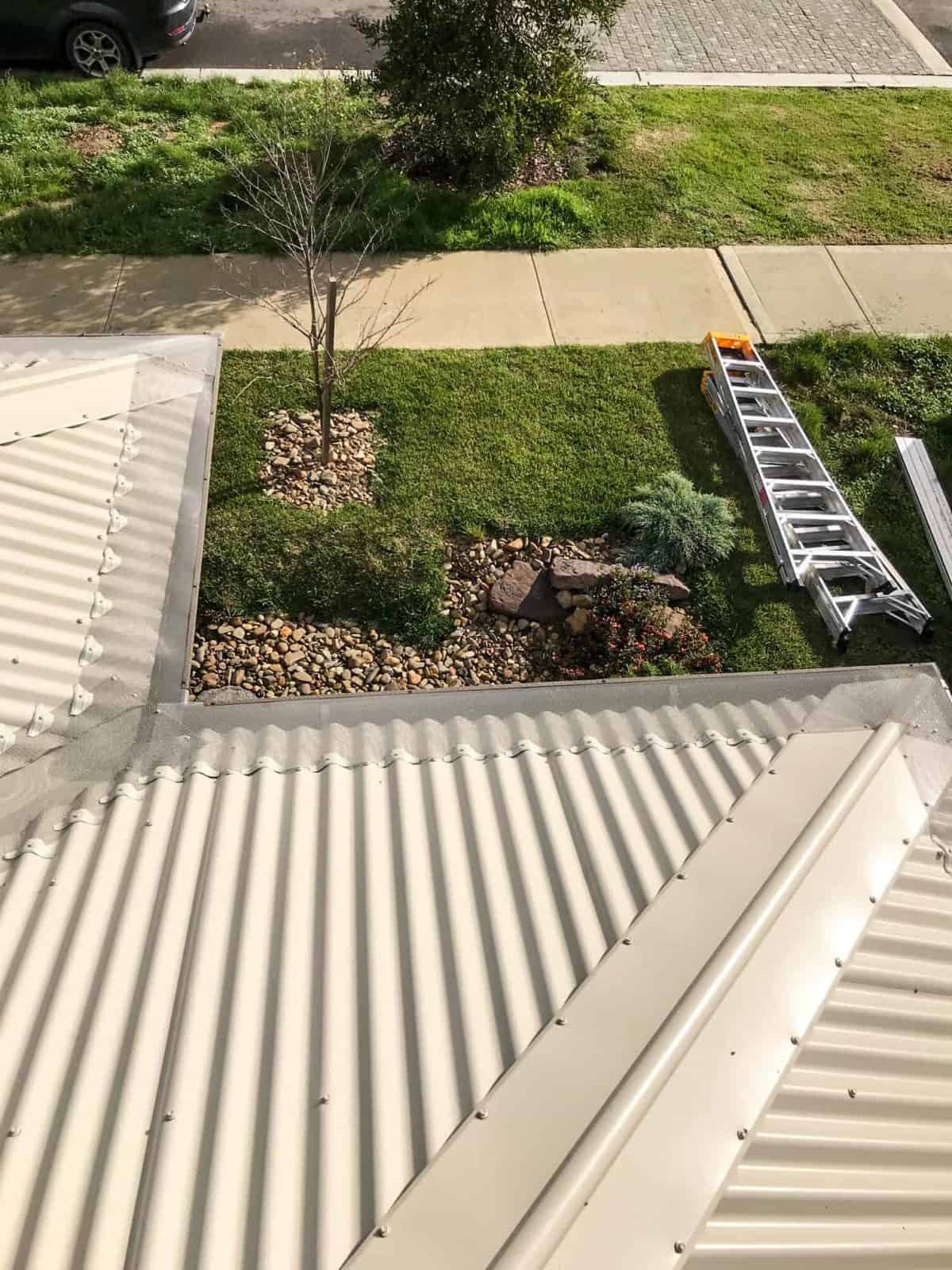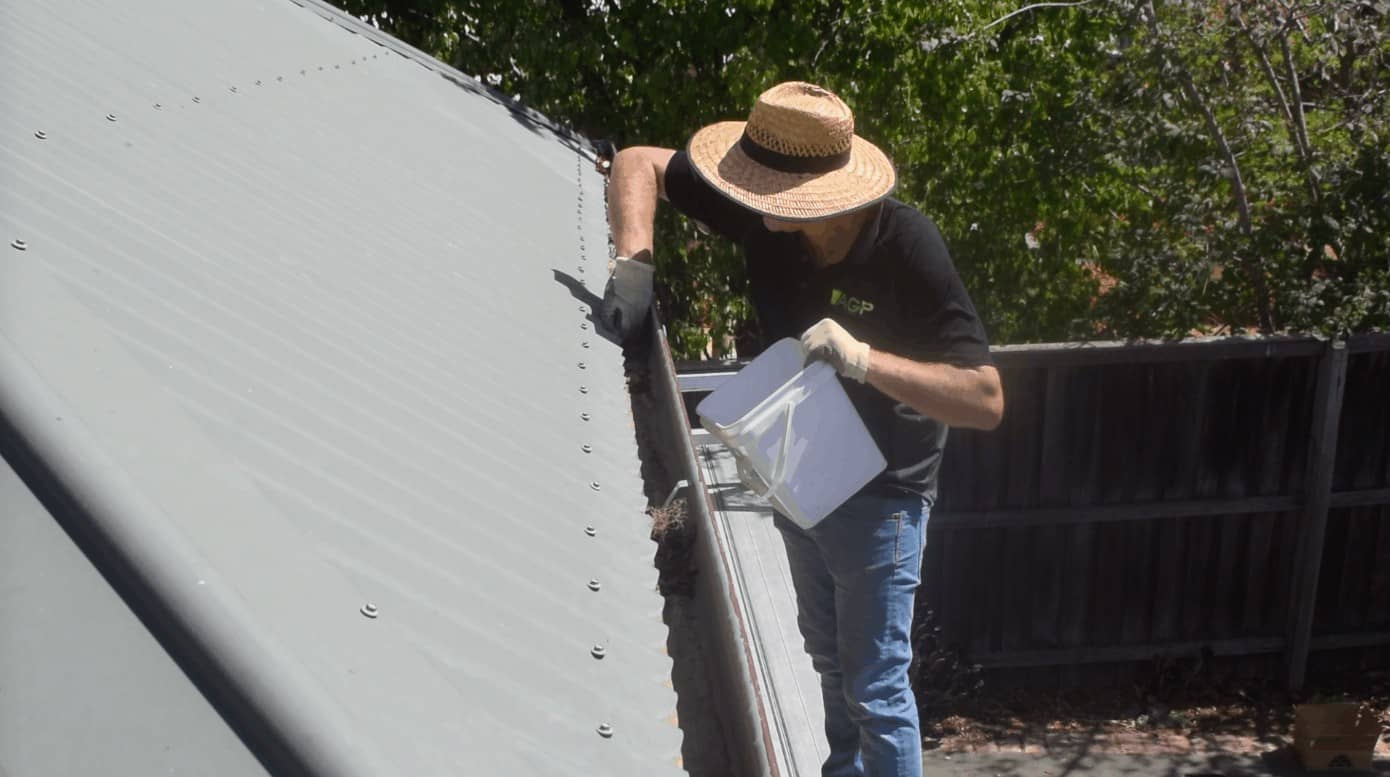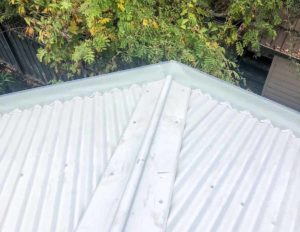Gutters aren’t something that people generally talk about, think about or even take much notice of. They’re above the eye line, just below where the roof ends and are there for one specific purpose — to catch the rainwater and deliver it, via the down pipes, into the waste water system or into storage tanks for later use.
As long as the gutter fulfils its purpose, it isn’t a cause of concern. The only time a gutter usually gets any attention is if it fails to do its job — if is leaks, if the water starts to overflow or if the gutter starts to sag. That’s when damage can result, with water getting into the walls, into the basement and causing mould, harm to the electrical systems and numerous other problems.
This is when repairs may be needed or the gutter at least needs to be cleared of debris that’s causing a blockage. This can be a dirty, smelly and possibly dangerous job due to the need for working at height.

Reduced Maintenance Needs with Gutter Guards fitted
The best way to avoid frequent cleaning out of gutters is to fit gutter guards that prevent much of the debris getting into the gutters. However, although some unscrupulous companies and sales people may claim that gutter guards are self-cleaning and require no maintenance at all, this simply isn’t the case. What is true is that gutter guards, if of high quality and installed correctly, will significantly reduce the amount of cleaning and maintenance that is required but they won’t altogether remove the need for it.
If you live in a property that’s surrounded by deciduous trees or by pine trees that shed needles, you may need to clean out your gutters at least once a year. This will generally be after the autumn leaf fall and may also need to be repeated each time there is a storm that has blown debris around.
When gutter guards are fitted, cleaning may be required very infrequently, with possibly several years between maintenance depending on where your property is located. However, you should check your gutters and guards at least once a year and probably also after a severe storm.
- Brush guards are like large bottle cleaning brushes and are placed directly into the gutter. They let water pass through but debris is caught in the bristles and needs to be removed occasionally, which may require the guards to be taken out and flushed with running water.
- Foam block guards also allow water to pass but not debris. Twigs and other items may get stuck in the foam, requiring the guards to be removed and rinsed with water to clean them.
- Reverse curve guards fit over the gutter and allow water to run in while debris goes over the top. If installed properly, they generally require little maintenance although some smaller debris may get through to the gutter.
- Perforated guards are metal and fit on top of the gutters, preventing debris getting through but allowing water to flow freely. Debris may collect on the top and can be swept off easily if dry.
- Mesh screen guards are similar to perforated guards but have a very fine mesh with a bigger area for water to pass through and protection against all but the smallest debris. Larger debris may collect on top and can be removed by wiping or sweeping.

Clean Thoroughly so You Need to Do it Less Frequently
A quick clean of the gutter guards will help and may often be sufficient but a more thorough approach will do a more effective job and means you won’t have to repeat the process in a matter of a few months. In this case, you should be cleaning not only the gutter guards but also checking the state of the gutters and down pipes as well as cleaning out the gutters themselves if this is necessary due to some debris, typically accumulations of fine silt, getting through.
To do the job properly and safely, you will need the correct equipment. This comprises a sheet to catch the removed debris, a ladder to reach the gutters, gloves to protect your hands and possibly goggles for eye protection, stout rubber-soled shoes so you don’t slip, a stiff brush or gutter scoop to remove debris and a hosepipe to flush out the gutters.
Once you’re prepared, do the job in a methodical way:
- Place the sheet below where you’ll be working so it will catch any debris you dislodge. This will protect your plants, lawn and paths and will ensure you spend less time cleaning up afterwards.
- Place your ladder securely against the wall, using any safety settings that are available for the ladder and, if possible, have someone at the base of the ladder to keep it in place. If you’re not confident on a ladder, have a practice climb before you start.
- Put on your gloves and goggles before starting.
- If your property is surrounded by trees, the roof may have an accumulation of debris that will eventually be washed down into the gutters. Use the hosepipe to wash this off so you’ll avoid the need to remove it later.
- Remove with the stiff brush any debris that’s caught by the gutter guard. If anything’s stuck in the guard, just pull it out.
- Inspect the gutter for sags, breaks and other faults. Also check if any debris has got through the guard and may cause a blockage.
- If there is debris in the gutter, you may have to remove the guard and then scoop it out. Finish off with a hosepipe to rinse out any accumulated silt and other small debris. Don’t forget to do the downpipes also and make sure they’re running freely. You may be able to remove any blockages with a long stick.
- Replace the gutter guard, remove your equipment, clean up any dislodged debris and you’re done until next time.

Simpler and Quicker Cleaning Process
Whilst this sort of cleaning process is an inconvenience and isn’t a job that anyone looks forward to doing, it is an awful lot easier when gutter guards are fitted. You won’t have to do it as often and there is much less debris to deal with.
Blocked gutters can cause all sorts of problems due to water damage. Fitting gutter guards helps to prevent this and also has other benefits that include preventing birds and other creatures building nests, reducing insect infestations and bacteria, and ensuring rainwater is fresher if stored for use.
Your gutters will last longer and remain in good condition if you fit gutter guards. However, you’ll maximise all the benefits if you keep them clean so rainwater can run freely. If you’re not happy doing this yourself, get a professional to do the job and ensure your gutter guards and gutters remain in the best possible condition.
Frequently Asked Questions
Do gutter guards still need maintenance? Yes. AGP mesh keeps 95 %+ of debris out, but we recommend a quick visual check and hose-down once a year to keep the system performing at 100 %.
How often should I inspect the mesh? Most homes only need an annual inspection; heavily-treed sites may benefit from a spring & autumn clean.
What’s the safest way to clean the gutter mesh? Use a soft brush or blower from the roof edge, then flush the gutter with a low-pressure hose. Avoid commercial pressure-washers that can dislodge fixings.
Do I have to remove the mesh to flush the gutter? No. Routine flushing is done through the top.
What are the warning signs that maintenance is overdue? Overflowing down-pipes, water backing up behind fascia, or weeds poking through the mesh.
Will DIY cleaning void my warranty? No, provided you don’t cut or bend the mesh. Accidental damage from improper tools isn’t covered under the 25-year material & 20-year workmanship warranty.
Can I pressure-wash the roof and mesh? A gentle rinse is fine; keep pressure below 1 500 psi to protect the Interpon D1010 powder-coat.
Does maintenance differ for tiled vs metal roofs? Frequency is the same, but on tiled roofs include the valleys, where wind-blown debris can settle first.
At Aussie Gutter Protection, we offer a range of superior gutter guard solutions designed to tackle even the finest debris. Our TuffMesh™ and GutterMesh systems provide excellent protection and durability, ensuring your gutters remain free from blockages.
Ready to protect your home with the best gutter guard technology? Explore our TuffMesh™ and GutterMesh ember guard range today and experience the difference. Visit our website to learn more and request a free quote now. Don’t wait until your gutters are clogged—take action and safeguard your home with Aussie Gutter Protection’s top-quality solutions.
Discover the Aussie Gutter Protection difference and how we can serve you.










